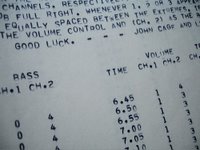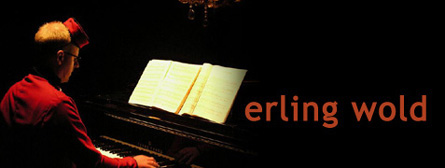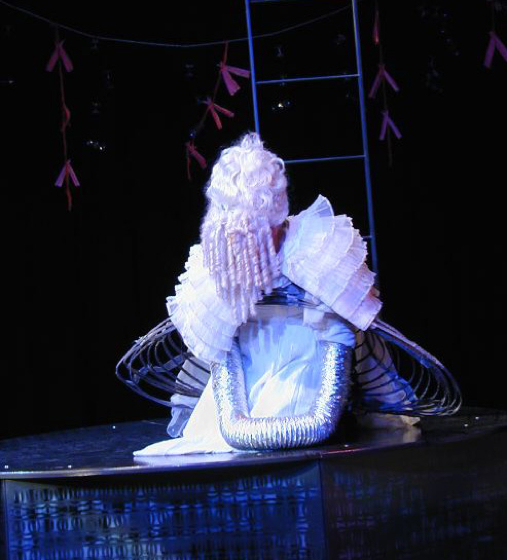 When I was on the steering committee of the San Francisco Chapter of the American Composers Forum, I suggested that we have a composer-composer collaboration grant, similar to our composer-writer and composer-choreographer grants. This proposal was met by some skepticism if not derision by my fellow committee members. Most of them couldn't imagine that anyone would desire to apply for such a thing, but as a youth, I was very familiar with a few famous examples of such collaborations. One was John Cage and Lejaren Hiller's HPSCHD, released on a Nonesuch LP, each copy of which contained a unique set of instructions printed on a somewhat jittery high speed line printer of the day, that instructed the listener, at five second intervals, where to set the controls on their stereo for an added bit of liveliness, although it required a stereo with separate tone controls per channel and more that 2 hands to accomplish. The piece seemed to be a true collaboration, and may have worked well as Hiller and Cage both had an interest in chance and complexity. In an interview years later with Vincent Plush, Hiller discussed having first suggested the use of the famous Mozart-attributed dice game pieces and Cage using the I-Ching to make substitutions and that
When I was on the steering committee of the San Francisco Chapter of the American Composers Forum, I suggested that we have a composer-composer collaboration grant, similar to our composer-writer and composer-choreographer grants. This proposal was met by some skepticism if not derision by my fellow committee members. Most of them couldn't imagine that anyone would desire to apply for such a thing, but as a youth, I was very familiar with a few famous examples of such collaborations. One was John Cage and Lejaren Hiller's HPSCHD, released on a Nonesuch LP, each copy of which contained a unique set of instructions printed on a somewhat jittery high speed line printer of the day, that instructed the listener, at five second intervals, where to set the controls on their stereo for an added bit of liveliness, although it required a stereo with separate tone controls per channel and more that 2 hands to accomplish. The piece seemed to be a true collaboration, and may have worked well as Hiller and Cage both had an interest in chance and complexity. In an interview years later with Vincent Plush, Hiller discussed having first suggested the use of the famous Mozart-attributed dice game pieces and Cage using the I-Ching to make substitutions and that"Although we were and have been different in many ways in the way we write, we find a big degree of overlap in terms of – of humor, personality, and also, rally our ideas are not that far different in many ways. It was a lucky coincidence, because it wouldn’t have worked otherwise."
Humor is always a good ingredient for collaboration, or at least a lack of self-important seriousness. In the interview, he mentions one of Cage's other collaborations, Double Music with Lou Harrison. When I was casting about for information on this piece, I happened across Robert Gable's aworks blog mention of the fact that Cage and Harrison composed their two parts separately, having agreed on the length of the piece beforehand. (And reading that reminded me of the 59th story from Indeterminacy - maybe this was a collaborative piece as well?) But the aworks article references Philip Glass / Ravi Shankar's Passages and there is The Juniper Tree by Philip Glass and Robert Moran as well. Both of these are not moment-by-moment collaborations, but rather have alternating sections written by each composer with some sharing and contrasting of themes and textures. I've worked on a few collaborative dance scores with Thom Blum for Deborah Slater, some where we took each other's works and manipulated them and some where we had overlapping and responsive sections and some where we took foreground and background. Since I'm a composer of note-oriented and pretty music for standard instruments by nature and he is a composer who tends to write noisy and sound-oriented works for electronics, and we don't take ourselves too seriously, the mix may have been easier to pull off, as we inhabited very different spaces in the composition. We're planning to do something together for my Mordake opera premiering next year.
photo of HPSCHD printout by cityofsound







